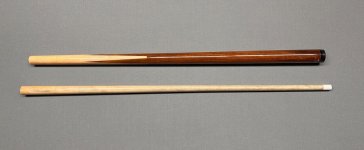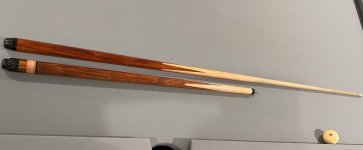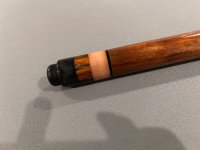Seishin
Member
Hey everyone!
Ok, so, like many I imagine, I came to pen turning completely by accident. I bought a specialty lathe because I've always dreamed of making pool cues. One of the things I'd never really considered about making pool cues is the amount of time you wait for things (turn a shaft, let it sit for a month and see if it moves, turn it again, wait a month, etc.).
One day I saw a Youtube video on pen turning and thought "Wow, that looks like fun!" so I ordered a few kits. Next thing I new I was ordering a small pen lathe, within three days I realized it was too small and ordered a larger lathe. I've been hooked from the moment I held the first pen I had made.
This was about 2 months ago. So yeah... I have so much left to learn.
That brings me to my question (discussion?) for today...
I love working with exotic woods, but so many people today are looking for the bling instead of the class of an item. So, I need to learn more about non wood blanks.
I've been pouring epoxy resin for inlays for pool cues. So I'm sure I can pour for pen blanks as well and have tried. I melted it while sanding. *LOL
Can y'all talk to me about the differences between epoxy resin, acrylic, and alumalite pen blanks?
1. What are the differences?
2. Why do you prefer one over the other?
I would greatly appreciate your feedback.
Thanks!
Rusty
Ok, so, like many I imagine, I came to pen turning completely by accident. I bought a specialty lathe because I've always dreamed of making pool cues. One of the things I'd never really considered about making pool cues is the amount of time you wait for things (turn a shaft, let it sit for a month and see if it moves, turn it again, wait a month, etc.).
One day I saw a Youtube video on pen turning and thought "Wow, that looks like fun!" so I ordered a few kits. Next thing I new I was ordering a small pen lathe, within three days I realized it was too small and ordered a larger lathe. I've been hooked from the moment I held the first pen I had made.
This was about 2 months ago. So yeah... I have so much left to learn.
That brings me to my question (discussion?) for today...
I love working with exotic woods, but so many people today are looking for the bling instead of the class of an item. So, I need to learn more about non wood blanks.
I've been pouring epoxy resin for inlays for pool cues. So I'm sure I can pour for pen blanks as well and have tried. I melted it while sanding. *LOL
Can y'all talk to me about the differences between epoxy resin, acrylic, and alumalite pen blanks?
1. What are the differences?
2. Why do you prefer one over the other?
I would greatly appreciate your feedback.
Thanks!
Rusty




